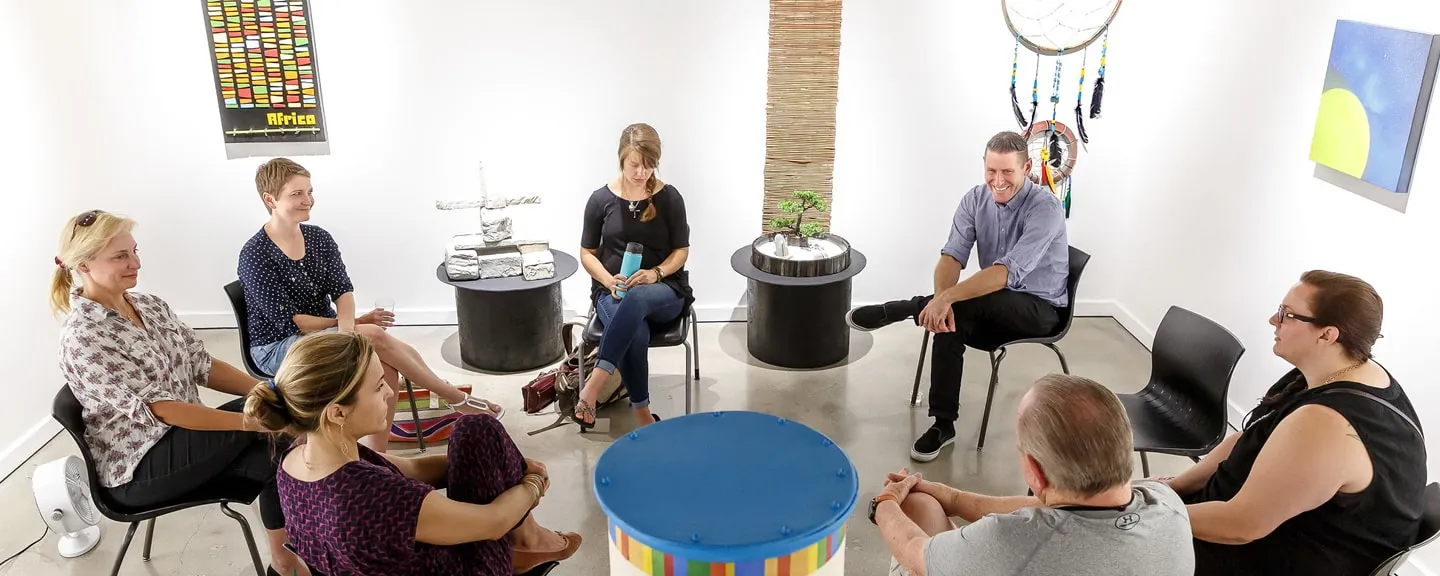- Home
- >
- APU Articles
- >
- News Article
Keys to Success After MFA Programs: Hard Work and Focus
July 18, 2019 | Written By Tobin Perry

Just ask Azusa Pacific University alumnus Justin Robinson, MFA ’16. When prompted to share the habit most important to him when transitioning from an MFA program to life as a working artist, Robinson didn’t need to think long. “The [most important] thing is having deadlines and sticking to them—and setting aside time to make and create even if you don’t have a show coming up,” said Robinson, who currently lives and works in Los Angeles. “It will keep your mind creative and fresh.”
If you’re thinking about pursuing an artistic career, MFA programs can help you achieve your dreams. If you ask recent MFA graduates about life after school, they’re sure to emphasize that after receiving their diplomas, the next steps are critical. Here’s what you need to know.
The Value of Hard Work and Focus
Robinson noted that hard work is an integral part of successfully transitioning into an art career after graduating from an MFA program. Thanks to the training he received at APU (as well as his tireless work ethic), he was able to host three art shows in the year after he completed his degree.
“You have to go out and get it,” Robinson said. “The art world is fun and glamorous, but it’s also hard work. Be prepared for the many no’s that will come, or even the non-replies. Just don’t give up. You have a voice, and it will be heard one day. My motto is trust, pray, believe. Trust in what you’re making, pray over everything, and believe that God will work it out and your message will be heard.”
Like Robinson, many graduates of MFA programs find that becoming a working artist requires a great deal of focus and dedication.
For example, since graduation, Lola Montejo, MFA ’17, has begun teaching at Front Range Community College in Denver while continuing a career as a practicing artist. In doing this, she has leaned heavily on the time-management skills she learned as a student.
“When I was in grad school, my schedule was very full—I was a full-time student, working full-time, and raising a family,” Montejo said. “I had to learn how to effectively manage my time. The hard work and sacrifice I had to make in grad school are second nature to me now. It does not get easier after graduating from school and becoming a professional artist.”
How APU Prepares MFA Graduates for the Future
The Master of Fine Arts in Visual Art program at Azusa Pacific University is designed to help talented artists with strong motivation explore their abilities by undertaking an intense critical dialogue of both faith and art. The program helps students cultivate the discipline of independent studio practice that will set the tone for the rest of their creative career.
Get to Know MFA Program Director Nery Lemus
“It made me a much stronger and more thoughtful artist, and the degree helped me get my current faculty position,” said APU alumnus Steven Felix-Jager, MFA ’17, PhD, who has taught high school art classes and currently serves as the chair of Worship Arts and Media at Life Pacific College. “I am also in the process of making a gallery at Life Pacific. The MFA program helped me understand the nuts and bolts of curating and gallery design.”
Additionally, Montejo encourages current MFA students to give all they have to learning and growing while at APU. “Just trust the process in the MFA program,” she said. “Buy in 1,000 percent. The professors are there to help you reach your goal of becoming an artist, so listen to them. Their input is all constructive and helpful.”